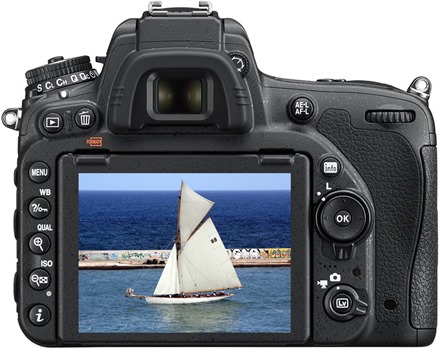Digital photography: Shooting in RAW, TIFF or JPG?
Posted By RichC on August 20, 2016
An aside … I spent my formative years engrossed in photography, back before it was digital and when "souping" film in a darkroom. Nowadays 90% of what I take is on a smartphone due to the simplicity and recent improvements in quality. Still, the best photographic images come from a quality lens and large sensor in the hands of a photographer who knows how to marry creativity and composition to the science of capturing light digitally. Part of that science is how to "save" the image after taking a photo … so here’s little advice from a professional in Melbourne Australia and shared on Mel365.com.
 Photo from our Western Mediterranean cruise in 2009
Photo from our Western Mediterranean cruise in 2009
The question: How do you know when to use RAW, TIFF or JPG if you are taking more than smartphone pics?
Here’s how to get better photos out of your expensive DSLR and editing setup.
Levels of brightness
JPG is a 8-bit file which stores up to 256 levels of brightness. RAW is a 12-bit file, which stores up to 4096 levels of intensity. These are typically the two formats you are offered to save on a camera. What a difference!! In case you do some post processing, like HDR, raw format is the way to go, no question about.Otherwise, just use JPG, easier. But remember once you have saved in JPG, you lost over 3800 levels of intensity that you could use in future, maybe in two years time, when you decide to start doing some post-processing, even things as easy as White Balance. As a long term solution I always suggest to go for RAW.
File compression
The JPG file is stored in compressed format and you will loose information. Just think about the over 3800 levels of intensity lost as a start, than lots of details, and …… The positive side is that your file may be a fifth in size compared to RAW.So, if you have a small memory card or you are travelling and you don’t have too much memory left, than switch to JPG. My suggestion is just to upgrade to a bigger memory, nowadays it is so cheap, compared with the information you loose when shooting JPG.
Photo printing
Photos are made to be printed. Of course not all of them, only the nicest ones. Each end of the year organize a book with all the photos that you like, as in the old days when you were printing the photos once back from a holiday. Here is another fact, the printing industry works mostly on 8 bits.Blurb, one of the best for printing books, uses either JPG or PNG, both 8-bits. So, again, if you shot and print, no post-processing, you may just be happy to use only the JPG format. Does printing at 16-bits make a difference? If you can find a place that prints 16-bits, give a try, and let me know what you think.
Your camera rules when shooting in JPG
When shooting we all pay most of our time, rightly enough, to the composition. There are however other technical decision to take as White Balance, Contrast, Saturation, Sharpness etc. If shooting in RAW you may be able to change them later in post production, if not happy with them.Unfortunately when shooting in JPG you have a limited range of maneuverability. However you cannot make miracles, if the photo is either not in focus or not sharp, there is just no way to improve it. Read The importance of focusing: how to have it right and 6 suggestions for a sharp landscape photo for an in-depth analysis.
Displaying RAW files
You cannot view RAW files straight on your computer. You need to install a driver for that. However if you use Lightroom, Adobe Bridge or Photoshop, they all include the driver by default, usually.If the camera is a new model, you may have to download the driver from the camera maker.
The annoying thing, in case you have a brand new camera, is that you may have to upgrade most of your software, therefore budget always some spare money for that.
Another way to go is to install the free DNG Converter from Adobe. This is a lossless raw image format which is recognized by any Adobe product.
The TIFF format
Here it is a new format, to make things even more confused, TIFF. This format is available as 8-bit or 16-bit. Once you have the RAW file and you want to process it, than the most natural thing is to convert it to TIFF 16-bit.It will be a bigger container than needed, but no other solutions (12-bit TIFF does not exit!!). You can save it as TIFF 8-bits but you will loose some info of course. However, TIFF does a lossless compression, as opposite to JPG.
RAW files and Adobe Lightroom
The most famous software for photo archiving is probably Adobe Lightroom. This package includes also some post-production functionalities which, in full honesty, cover the needs of most amateur photographers.The feature I love of this software is that it does not save my RAW files in any other format when I start working on the photos, it just saves the changes I do on the photo.
I this way I do not have any duplicated images. This is especially important nowadays with cameras shooting up to 50M saving on new Hard Disks purchase.
Comments